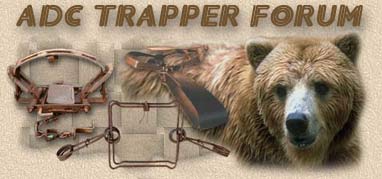Dennis Anderson: Long, quiet shotguns get another look
September 21, 2000
Recently I wrote about hunting crows and geese with shotguns equipped with 7-foot-long barrels. The novel guns were developed by two Twin Cities crow-hunting specialists who wanted to significantly reduce the sound the shotguns make when fired.
The men, Wendell Diller of Oakdale and L.P. [Brez] Brezny of Shoreview, initially constructed their unusual-looking weapons so they could hunt and shoot without disturbing people living near some of their longtime crow-hunting haunts.
"We've seen many homes and other developments built in the countryside over the years, to the point where we've lost some of our best crow-hunting spots," Diller said. "We built the guns so we could still hunt near some of those areas without disturbing anyone."
State law generally prohibits hunting within 500 feet of homes or other buildings occupied by people or livestock. Diller and Brezny don't want to hunt closer than that. But neither do they want their shotgun reports to alarm people unnecessarily while they are hunting legal distances from buildings.
Sound from the guns is reduced by extending and progressively porting the barrels, and by using subsonic shells -- or shells that propel shot at below the speed of sound.
On our first outing, Diller and Brezny demonstrated that the guns are effective on crows at distances of 40 and even 50 yards.
But crows are fairly lightweight birds, and downrange energy of shot required to kill them is relatively minimal.
Geese, on the other hand, provide significantly different kinds of targets. Even for conventional shotguns firing fast, heavy steel or other nontoxic loads, the birds can at times be a challenge to kill cleanly.
Yet Diller and Brezny believe their long-barrelled guns might realize their greatest potential in metropolitan areas, where giant Canada geese often are abundant. It is in these areas that wildlife managers and city managers often are frustrated in their attempts to reduce goose populations. One reason: Many municipalities restrict or even prohibit goose hunting within their borders for fear gun noise and/or spent shot might disturb residents.
Addressing these challenges is possible, Diller and Brezny say, with guns that are quiet and that fire loads deadly enough to kill geese while carrying shot surprisingly short distances.
In an attempt to test the efficacy of the guns on geese, Diller and I and our sons hunted a field in Lino Lakes on opening day of the metro goose season. The field looked inviting enough but provided no shooting.
Undeterred, Diller, Brezny and I tried again to find geese Monday morning at a friend's place not far from Stillwater. In so doing, I was assigned a Browning pump with a 6-foot-long barrel. Brezny used a gun with a barrel of similar length. And Diller employed one with a 7-foot-long barrel.
Our setup included a small spread of decoys arranged on a slight knoll in a cutover pasture. Just downwind of the decoys, Brezny sprawled in a fancy spring-loaded camouflage lounge chair, while, alongside -- and considerably less comfortably -- Diller and I laid on the ground covered by camouflage cloth.
Soon into the exercise, a lone honker circled from behind and to my right, interested in our decoys but not approaching as directly as we might have hoped. I watched and waited a few moments before sitting up to shoot, folding the bird dead with my second shot. The bird dropped 35 yards away.
Soon thereafter, a small flock of geese overflew us, and I shot again.
Diller and Brezny later told me they didn't shoot because they felt the birds were slightly out of range. At first, it seemed they had a point, because the birds kept flying. But a few hundred yards away my bird folded dead -- shot through the lung.
A few points: Diller and Brezny had earlier hunted geese with the guns in Wisconsin, where they shot birds on successive mornings over water, which is legal in that state.
Initially, they used shells that propelled "T" shot at the muzzle at 850 feet per second (fps), which is significantly slower than some of the very fast commercial loads -- say 1,400 fps -- that are available.
"The downrange killing power of the 850-fps loads is comparable to those faster loads, but the shooter -- because of the slower speed -- must adjust by adding significantly more lead," Diller said. "That can be a challenge."
For that reason, Diller and Brezny outfitted me with slightly faster T-shot loads, in the neighborhood of 1,000 fps. With these, they felt I would have a better chance of killing a goose cleanly because I wouldn't have to factor in so much lead.
The tradeoff, of course, is that the 1,000-fps loads are slightly louder than the 850-fps loads. Still, my gun made significantly less sound than guns firing typical commercial goose loads.
Diller and Brezny are discussing use possibilities of the long-barreled guns with Minnesota Department of Natural Resources officials. It's possible, the two say, that some municipalities within the Twin Cities metropolitan region that now prohibit hunting but have surplus geese could be convinced that controlled hunts using long-barrelled guns might reduce numbers of nuisance birds.
Said Diller, "One possibility is that city officials could set up hunting areas using laser range-finders so hunters not only wouldn't disturb residents with loud gun reports, because they would have the quiet guns, they would have no chance of firing shot into inhabited areas," Diller said.
Stay tuned.



